Sorted by date Results 101 - 125 of 308
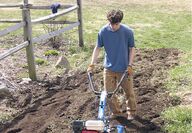
Pests of all kinds plague plants relentlessly throughout the summer season. Many gardeners would rather not turn to chemicals as a solution. One option is soil solarization - a fancy term for a simple way to combat plant diseases, insects, and weeds when the weather warms. The method requires stretching transparent plastic sheeting over moist, tilled soil during the warmest and sunniest months of the year. As clear plastic traps the heat of the sun, it changes the soil in physical, chemical,...

Small in stature but large on looks, miniature roses can make a major presence in the garden. "They make wonderful landscape plants," said Kathrine Johnson, an Oregon State University Extension Service master gardener since 1998. "They flower big time all season long." Often wrapped in foil and sold as gifts, miniature roses grew a reputation as houseplants. In fact, she said, these diminutive plants require six hours of full sun and good air circulation, so indoor living doesn't agree with...

Spring brings buds and blooms, but it also brings moles, voles, and gophers. The small mammals take gardeners to their knees to peer down tunnels, set traps, and toss in everything from kitty litter to gum. They wage war against the critters before they know what they’re fighting, which can lead to frustration. “How you deal with them depends on what you have,” said Dana Sanchez, a wildlife specialist for Oregon State University’s Extension Service. “The traps are different and so are the baits...

As bugs begin to munch our plants, our thoughts turn to – what else? – how to kill them. Bloodthirsty as that may sound, most gardeners don't appreciate planting a garden only to have it turn into a mottled, notched, or spotted mess. Sure, a certain amount of nibbling is to be expected and tolerated by gardeners who use integrated pest management, said Heather Stoven, a horticulturist with Oregon State University Extension Service. But dead plants are not. "Accepting a little damage is imp...
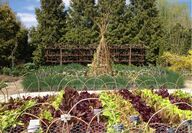
As you walk from car to doorway, ripe blueberries wait to be plucked, the fragrance of basil reminds you of the pesto planned for dinner, a small slug meets its end before snacking on the lettuce seedlings. Without knowing it, you're practicing permaculture. And as part of an effort to aid this growing movement, a free new course at Oregon State University this spring may help you learn more. "Part of permaculture is placing elements for efficient management as you move through the garden,"...
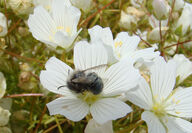
For mason bees, the wait for their first meal is a long one, six months if it's a day. There's no TV, no smart phone, not even a book to while away the time as these solitary bees hang out in their tight cocoons waiting for the cool temperatures of early spring to break them out of lethargy, to convene at the floral banquet waiting for them among the branches of fruit trees. And because honeybees and other pollinators haven't made an appearance yet, there's more sweetness for the native mason...
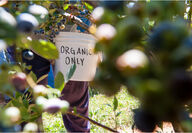
You've decided to go organic in the garden, but the products staring back from the nursery shelves seem as daunting as the bugs and diseases they're meant to control. What's a gardener to do? First, take some advice from Weston Miller, a horticulturist with Oregon State University Extension Service. Stop, take a breath and evaluate your garden. How bad is it? Have you really looked carefully? "With organic gardening, there are fewer options available, so going on bug patrol can be really...

When you've got a gardening question, try tapping out a local phone number for a customized answer instead of delving into the impersonal internet. One-to-one contact could mean the difference between success and failure. At the other end of the phone line in 28 counties sit Oregon State University Extension Service Master Gardeners poised to solve your gardening problems - or help keep them from happening in the first place. More than 3,000 volunteers have graduated from 66 hours of intensive t...
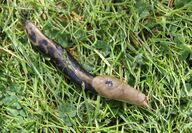
Follow the glistening trail and you'll find the gardener's most familiar, frustrating and certainly slimiest pest, the common slug. It's spring, after all, and as soil temperatures start to climb, slugs rise from their winter hiding place underground to munch tender seedlings, emerging perennials and even seeds. "What slugs want is a place that's warm and moist," said Claudia Groth, an Oregon State University Extension Service master gardener. "That's why they're coming out now. The soil tempera...
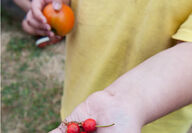
You've got clippers in hand, a shrub in mind and a gleam in your eye. It's pruning time. But do you have a plan? Before you clip a stem, know your shrub, said Neil Bell, horticulturist for Oregon State University's Extension Service. "What you want to focus on is flowering time and growth habit," he said. "Certain shrubs you can prune right about now; others you should wait until after they flower." Spring-blooming shrubs like forsythia, mock orange, flowering quince, deutzia and lilac, should...

Unsightly and seemingly uncontrollable, weeds have a way of taking over the garden in the time it takes to put the hoe away. Keeping weeds under control takes time and patience, but the effort is worth it, said Chip Bubl, horticulturist with Oregon State University Extension Service. Plants - especially vegetables - have a hard time thriving in the company of unwelcome neighbors that compete for water, light and nutrients. Some also harbor pests or diseases. "Weed seedlings are vulnerable to hoe...
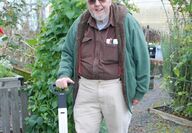
When it comes time to garden, which is almost every day, 83-year-old Jerry Anderson stretches to warm up his muscles, picks up an ergonomic trowel and settles himself on a bucket in front of one of his raised beds. He sees no reason to ever stop his routine. "I've got eight dahlia beds built so I can put one on top of another," said Anderson, who has been an Oregon State University master gardener for 21 years. "That way if I'm in a scooter someday, I can still garden." On the days he's not gard...
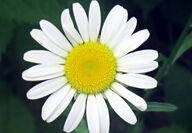
Learning to recognize 400,000 species of plants is more than daunting; it's impossible. But making a start by learning how to identify family characteristics can help you manage a healthier garden. "It's important for gardeners to be aware of how to ID plants," said Karen Pleasant, Oregon State University Extension Service master gardener coordinator in Josephine County. "It will tell you what the correct cultural needs are, what kind of problems they may have. Knowing which plants you have...

In the rows where your vegetables grow, good neighbors can make all the difference by helping with everything from pest control to providing windbreaks and shade. Pam Zaklan, who has been an Oregon State University Extension Service Master Gardener program since 2011, has long known the affinity of plants for each other. She came about her knowledge of companion planting through the lessons she has learned from vegetable gardening for 50 years. The more she researched, the more she understood...

Sweet peas are a classic flower in English gardens since they were introduced in the 17th century from southern Italy and have transplanted well to all parts of the world, including climate-friendly Oregon. The first sweet peas had relatively small flowers but possessed a powerful and attractive fragrance. Sweet pea flowers naturally self-pollinate while still in bud, and it would seem that their color and perfume are there to please the gardener more than the bee. Shorter bush or dwarf varietie...
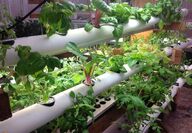
Ask experienced gardeners what makes their garden grow and they'll come up with the same response: great soil. Good answer, but not the only one. The same crops grown in soil thrive in water, too, as long as there are nutrients and oxygen involved. In fact, vegetables grown hydroponically root and grow faster than traditionally grown plants, said Barry Burnsides, an Oregon State University Extension Service master gardener. This ages-old system uses a mixture of water and nutrients to grow...

You've got clippers in hand, a shrub in mind and a gleam in your eye. It's pruning time. But do you have a plan? Before you clip a stem, know your shrub, said Neil Bell, horticulturist for Oregon State University's Extension Service. "What you want to focus on is flowering time and growth habit," he said. "Certain shrubs you can prune right about now; others you should wait until after they flower." Spring-blooming shrubs like forsythia, mock orange, flowering quince, deutzia and lilac, should...

Struggling with rose diseases often converts affection to frustration for the millions of gardeners who grow the beloved shrubs. Instead of cursing the big three – black spot, powdery mildew and rust – take the advice of Jay Pscheidt, a plant pathologist with Oregon State University Extension Service, who steers people to roses that enjoy immunity to the threats of these diseases. "Save yourself a lot of hassle and plant disease-resistant roses this spring for trouble-free bouquets in the sum...

The calendar doesn’t say spring, but gardeners are ready to go. Turning vegetable seeds into plants helps satisfy the urge to put hands in the soil. It’s best to seed cool-season crops such as lettuce, cabbage, kale and broccoli in flats in late February to early March in western Oregon, said Weston Miller, a horticulturist with the Oregon State University Extension Service. Warm-season crops such as tomatoes, peppers and eggplant should be sown in late March to early April. Eastern Oregon gar...

When you walk about your yard on a wet day, do your shoes stick in the mud? Could you make ceramic pots out of the soil in your garden? If the answers are yes to both, odds are you have clay soil, one of the biggest challenges for the home gardener. Clay soils in the Willamette Valley are the result of geologic actions that took place during the end of the last ice age – some 10,000-14,000 years ago, said Linda Brewer, senior faculty research assistant in Oregon State University’s College of...
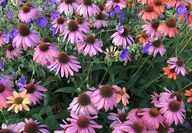
It's discouraging when your lettuce bolts or you can't get your mum to bloom. There's a reason for that, and it's all about day length, which determines or how much light the plant gets. To understand plant flowering, you need to get a handle on "photoperiodism," or amount of light and darkness a plant is exposed to. The amount of uninterrupted darkness is what determines the formation of flowers on most types of plants, according to Oregon State University Extension Service horticulture...

From garden center racks and catalog pages, colorful seed packets remind gardeners it's already time to start thinking of spring. But before grabbing a handful and heading to the checkout stand, take a few minutes to read the envelope. What's on the outside of a seed packet is almost as important as what's on the inside, said Weston Miller, a horticulturist with Oregon State University Extension Service. "There's a lot of information on the seed packet, everything from how deep to plant to how...

Ignoring moisture and insect damage in the home leads to serious problems down the line. Annual inspection is essential to head them off. Whether you do it yourself or hire someone, start your inspection by checking out this article from the Oregon State University Extension Service on home moisture problems to help solve many problems you might encounter. If you plan to inspect, maintain or repair yourself, begin by taking a tour around the exterior of the house. Does water wick up the foundati...

When winter comes and the menu for birds shrinks in urban backyards, they rely on the kindness of humans. That doesn't mean just a bird feeder of seeds and nuts. "Different birds are attracted to different foods and it's good to have a variety," said Dana Sanchez, a wildlife specialist for Oregon State University's Extension Service. "In addition to bird feeders, which people sometimes forget to fill, they need plants to forage on." This time of year, you'll notice winter wrens, pine siskins,...

As craft beer and home brewing continue to rise, interest in growing hops ferments among home gardeners. Shaun Townsend, Oregon State University's hops breeder, said he regularly fields questions from the public about growing hops. "Typical questions are: 'How do I fertilize, water and harvest? What sort of diseases and pests do I need to monitor for? What hop varieties should I get?'" said Townsend, who answers those questions and more in OSU Extension Service's publication, Growing Hops in...